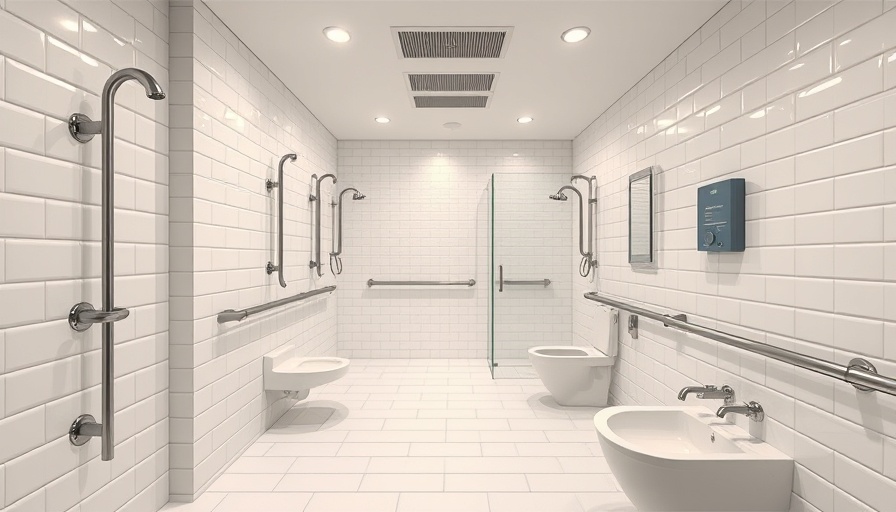
Understanding Bathroom Accessibility: A Growing Necessity
In the Garden State, accessibility is not just a legal requirement; it’s a vital aspect of home living that fosters independence and dignity for all residents. As societal awareness of inclusivity rises, ensuring that every individual can navigate their home—especially essential spaces like bathrooms—becomes a priority. With more people living longer and facing mobility challenges, the demand for accessible bathroom features is increasingly pressing. New Jersey's regulations come into play, guiding homeowners, builders, and architects in creating functional spaces that cater to diverse needs.
New Jersey's Strides in Creating Inclusive Bathroom Spaces
New Jersey's adherence to the Americans with Disabilities Act (ADA) and the New Jersey State Uniform Construction Code (UCC) underscores the importance of creating safe and accessible bathroom environments. These regulations ensure that bathroom designs include ample door widths, adequate grab bars, and functional shower systems. Compliance with the Fair Housing Act is also pivotal for multi-family dwellings, setting a standard for accessibility that aligns with national guidelines. Understanding these laws is crucial for anyone involved in home construction or renovation, as they not only promote legal compliance but also enhance the overall quality of life for residents.
Essential Elements of an Accessible Bathroom
What exactly makes a bathroom accessible? The first element to consider is the width of the doors. To accommodate those using wheelchairs or mobility aids, doorways should be at least 32 inches wide. This is a basic yet significant consideration that can facilitate smoother access. Similarly, grab bars are non-negotiable. New Jersey's guidelines specify that these bars must be installed near toilets and inside shower stalls to provide safety where it's most needed. Additionally, roll-in showers and bathtubs with built-in seating allow for enhanced independence, making it easier for everyone to use bathrooms without external assistance.
Common Pitfalls in Bathroom Accessibility
Despite clear regulatory guidelines, many homeowners overlook crucial details when making their bathrooms accessible. A frequent oversight is the incorrect placement or failure to securely install grab bars, which can lead to dangerous falls rather than preventing them. Furthermore, the importance of thoughtful shower designs cannot be understated; fixtures should be designed for easy reach, which often isn’t considered in standard planning. These common mistakes not only negate the benefits of modifications but can also increase risk significantly.
Why Awareness and Understanding Matter
For a homeowner, becoming aware of these accessibility laws and their implications is invaluable. This grasp not only ensures compliance but also enhances the living conditions for individuals with mobility challenges. Homeowners should view these modifications as investments in their property and the well-being of their residents. Furthermore, understanding these laws can inspire proactive home renovations that reflect both legal requirements and personal values towards inclusivity.
Next Steps for Homeowners
If you're a homeowner looking to enhance the accessibility of your bathroom, start by consulting with local building authorities to ensure planned changes are compliant with both state laws and safety standards. Evaluate your bathroom's current layout and features against the recommended accessibility guidelines, and consider seeking assistance from a professional contractor experienced in compliant renovations. Planning ahead can make all the difference, allowing you to create a welcoming environment for everyone who enters your home.
 Add Row
Add Row  Add
Add 




 Add Row
Add Row  Add
Add 

Write A Comment